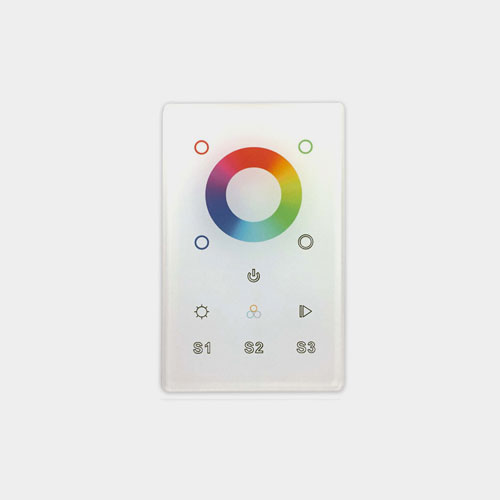
Welcome to the Luminii Live Light Blog, where we explore the captivating realm of lighting design. In this insightful Q&A, we delve into the design process behind the Sobela Ocean Aquarium at the Kansas City Zoo, highlighting the innovative lighting strategies that bring this immersive marine experience to life. Carlos, founder of Lightchitects Studio, shares his vision for creating an environment that captivates visitors while supporting the well-being of marine life. From the challenges of coordinating lighting with architectural elements to the thoughtful integration of sustainable practices, this discussion explores how lighting can enhance the storytelling of ocean ecosystems. Join us as we uncover the key aspects of this remarkable project and its impact on both conservation and visitor engagement.
While pursuing my architecture degree in 2007, I began working at a prestigious lighting design studio, where I discovered my passion for lighting. I became captivated by how light transforms the built environment and the immense impact of thoughtfully integrating lighting with architecture.
Driven to deepen my knowledge, I secured a Fulbright scholarship to pursue a master’s degree in Lighting Design at Parsons, The New School for Design in New York City. This experience allowed me to refine my expertise, eventually leading me to establish Lightchitects Studio in 2015.
With over 17 years of experience, I’ve had the privilege of working across a wide range of building typologies, including residential, hospitality, retail, restaurants, high-rise buildings, museums, temporary exhibitions, art installations, and aquariums. One of our notable projects is the Sobela Ocean Aquarium at the Kansas City Zoo, which marks the second aquarium we’ve completed. Currently, we’re working on two additional aquarium projects in the U.S.
The Kansas City Zoo & Aquarium offers visitors the opportunity to experience the ocean’s depths, a realm that many have never encountered firsthand. This new space, known as the Sobela Ocean Aquarium, provides a fully immersive marine experience.
The design is inspired by marine currents, using this concept to narrate the journey through various ocean environments. The exhibits reflect the dynamic nature of these ecosystems and support the zoo’s mission in conservation and education.
Visitors begin their journey at a tropical shoreline, following a warm current into deeper waters, passing through underwater forests, and eventually arriving at a cooler Pacific coastline. Changes in lighting, spatial transitions, and physical descents through the space enhance the narrative, stimulating curiosity and fostering a connection with the ocean.
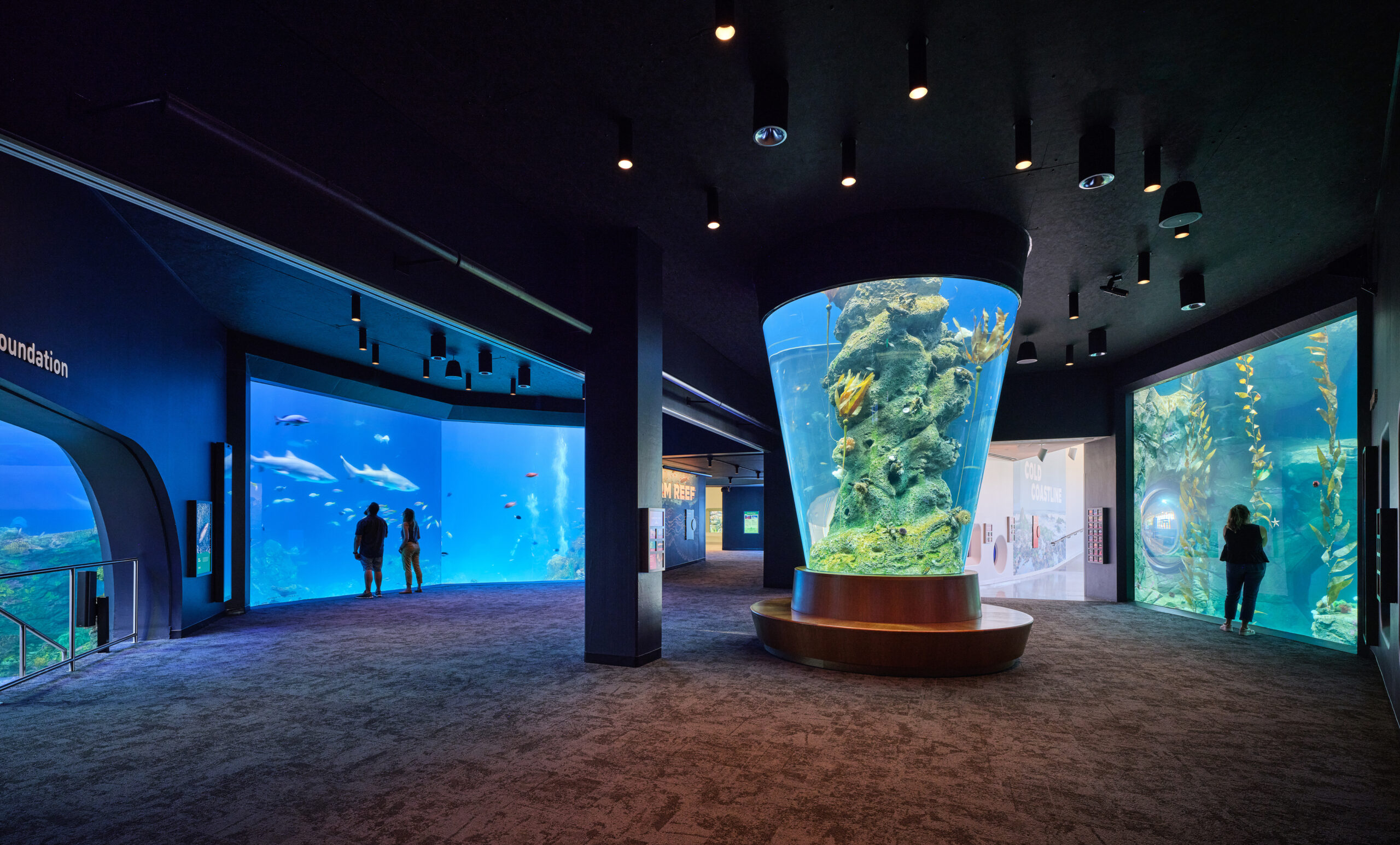
The lighting design recreates the sensation of traveling from sunlit shores to the mysterious deep sea by carefully modulating the intensity and quality of light. This approach evokes the vastness and wonder of the marine world, engaging visitors emotionally. The project has been recognized with several awards, including the Exhibit Award for Significant Achievement by the Association of Zoos and Aquariums, the Builder’s Association Building Excellence Award, and the V Ibero-American Lighting Design Biennial Award by Iluminet.
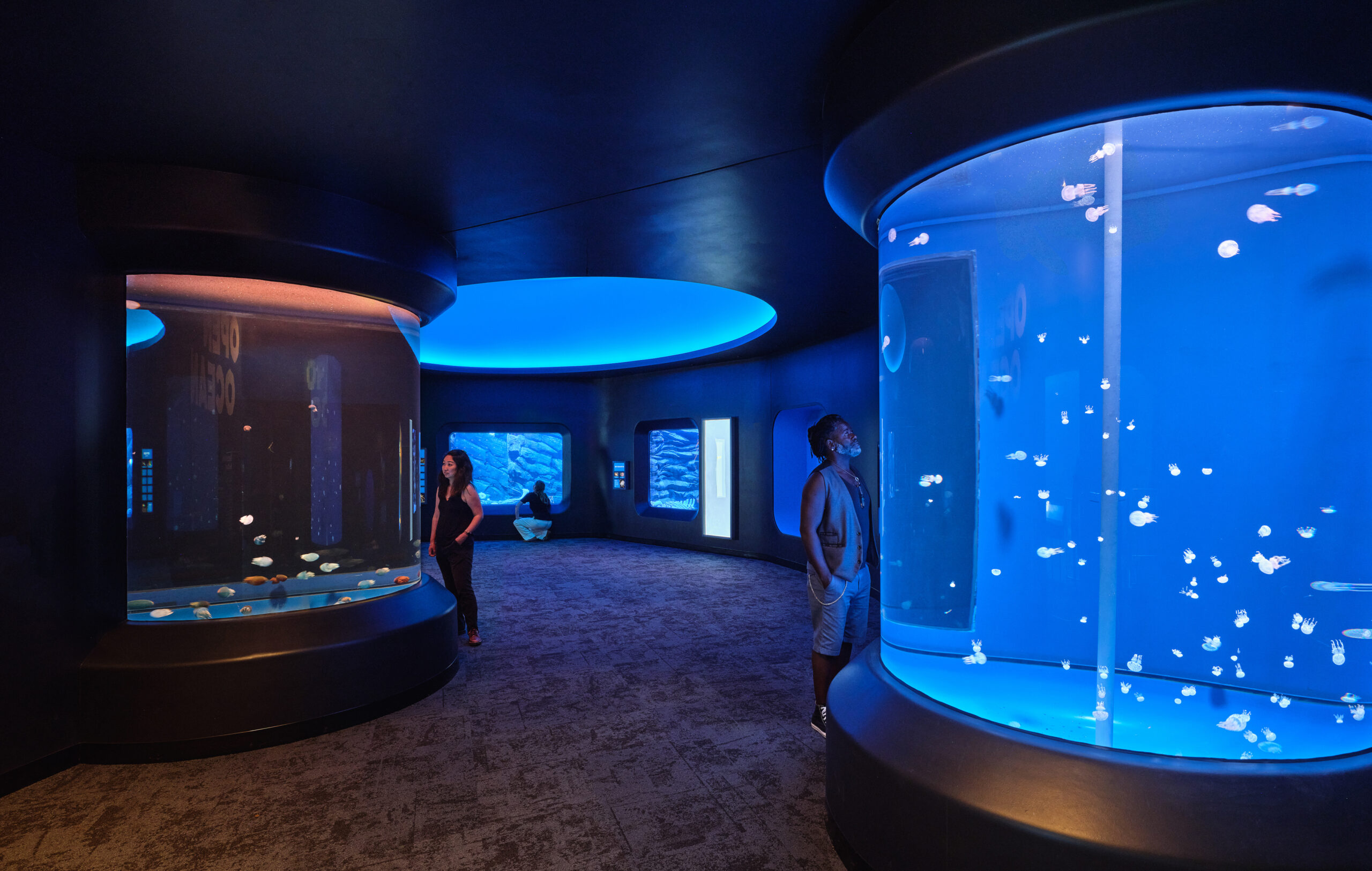
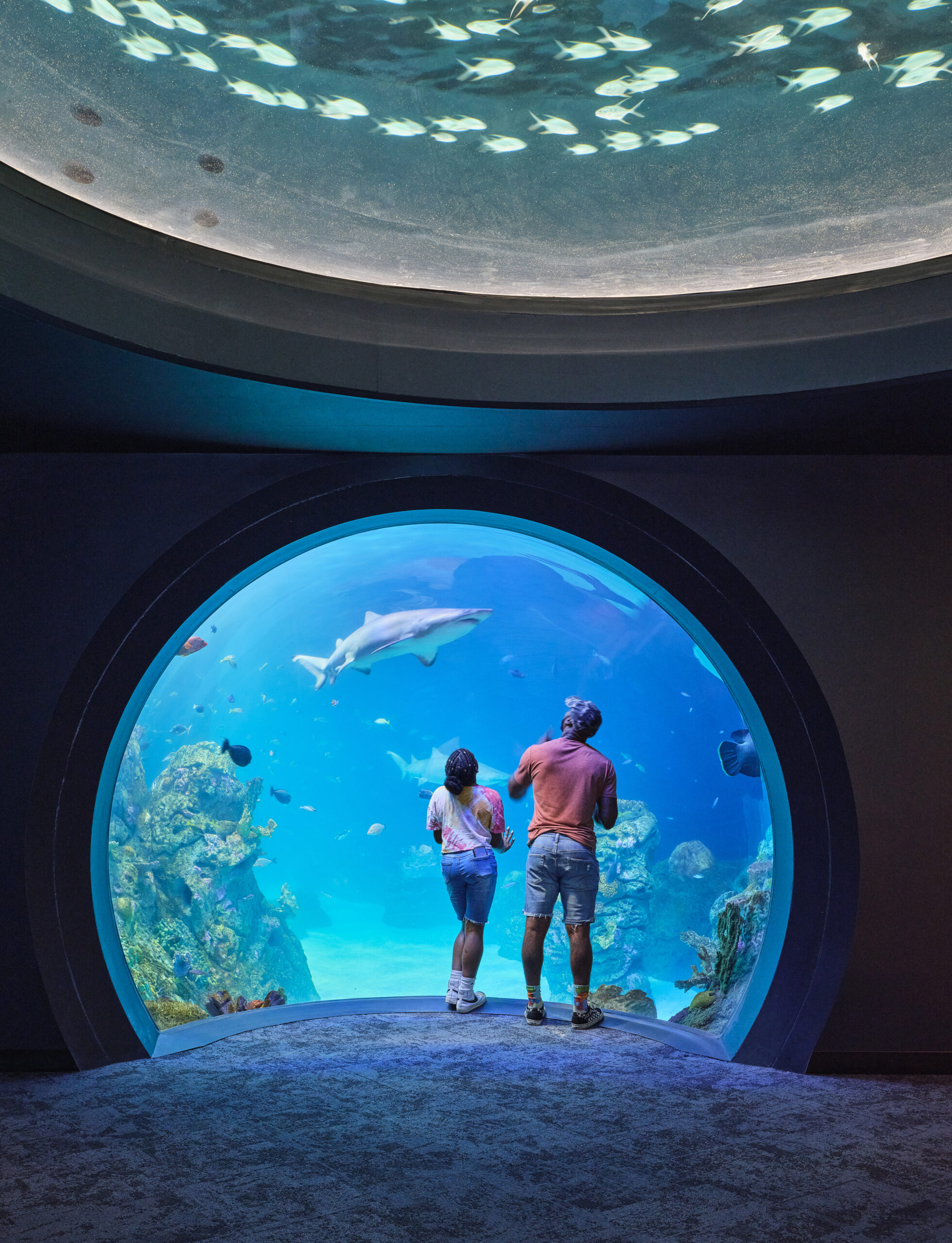
As with most of our projects, the primary goal was to reinforce the architectural and exhibit design concepts, allowing visitors to feel immersed in the ocean. Lighting played a vital role in shaping this experience. Achieving this required close coordination between finishes, architectural details, and lighting solutions, including collaboration with Luminii. Aligning our lighting strategies with the user experience, stakeholders’ interests, and budget constraints was essential for the project’s success.
Optic Arts by Luminii was an ideal partner, not only for their high-quality products but also for their excellent customer service. Their willingness to coordinate and adapt specific components made it possible to meet the unique requirements of this project.
Having access to clear and practical product information from Luminii was instrumental in addressing design and technical challenges. Luminii’s tools, such as their voltage drop calculator for low-voltage applications, proved invaluable during the design process. Their outstanding customer service consistently exceeded expectations, ensuring seamless project execution.
The wide range of product options, including different applications, IP ratings, and color temperatures, stood out. Combined with Luminii’s exceptional customer service, these factors made it easy for us to find precisely what we needed to achieve our design goals.
Absolutely. Aquarium lighting must balance multiple needs, including animal care, operational requirements, and visitor experience.
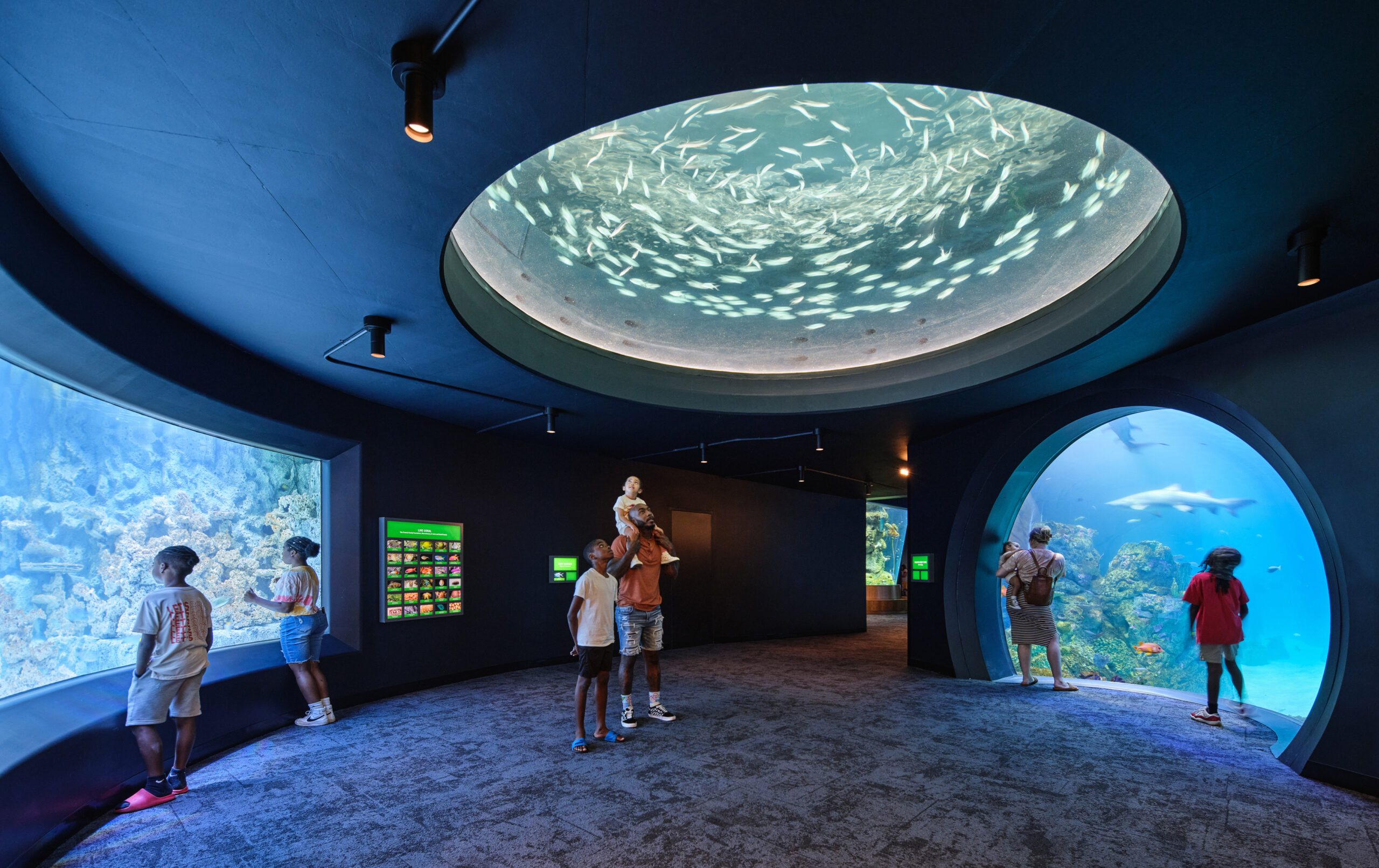
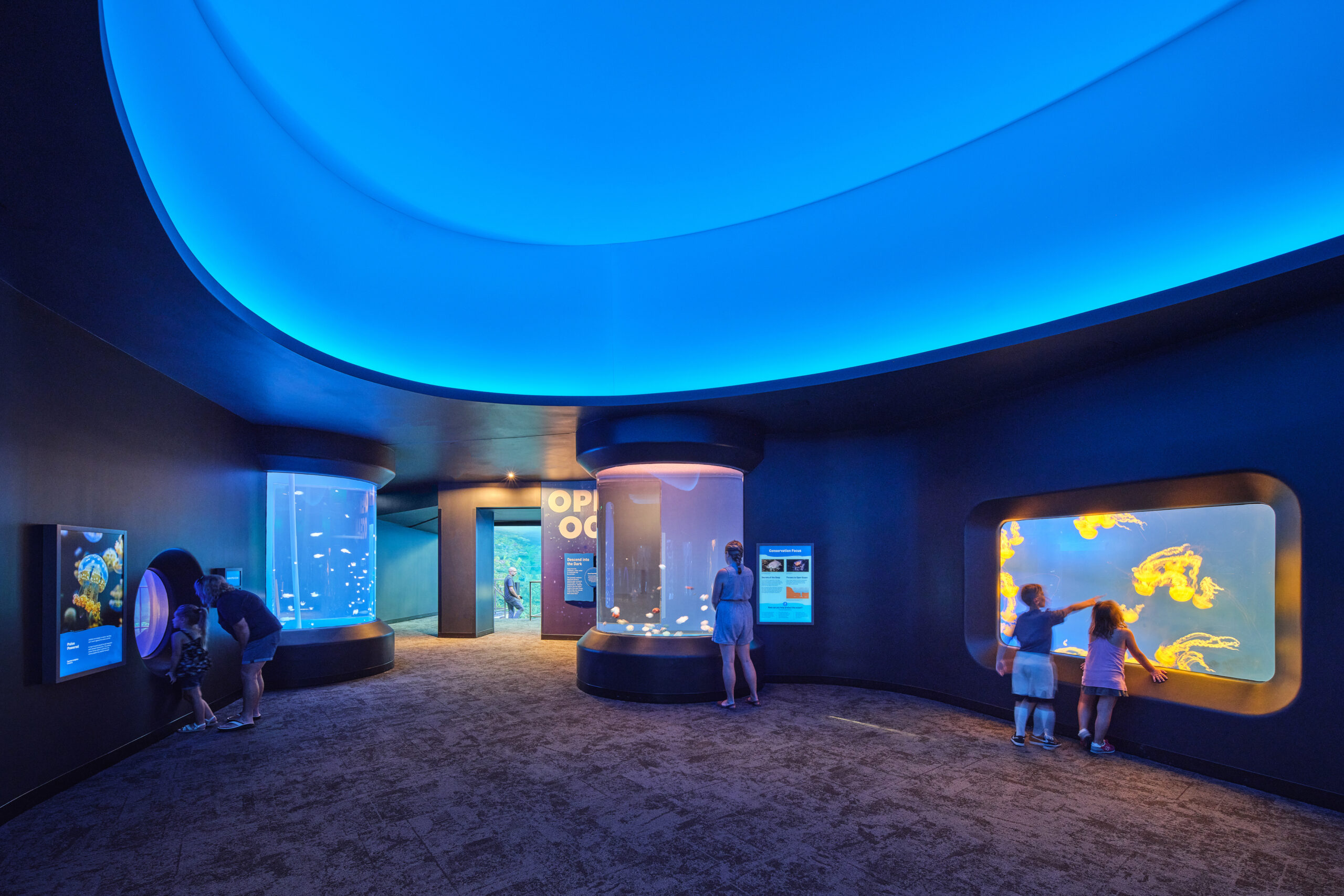
This project aimed for LEED certification, so energy conservation was a priority. Optic Arts’ diverse product range, including various wattage options, allowed us to meet LEED requirements without compromising on design quality, lighting effects, or code compliance.
The feedback has been overwhelmingly positive. The zoo staff, aquarists, and exhibit designers have expressed their satisfaction with how seamlessly the lighting complements both the architectural elements and the exhibits. They’ve praised the lighting for not only enhancing the visual appeal of the aquarium but also for its functionality—facilitating smooth daily operations and animal care routines.
Visitors frequently comment on how the lighting elevates their overall experience, making them feel immersed in the underwater environments. Many have shared that the gradual shifts in light—from the sunlit shallows to the darker ocean depths—help them feel like they’re embarking on a real journey beneath the sea. Families and educators appreciate how the lighting creates a balance between an engaging sensory experience and an informative one, fostering curiosity about marine life and ocean conservation.
Additionally, the client emphasized that the lighting exceeded their expectations by achieving both the artistic and operational goals of the project. They were particularly impressed with how the lighting design met LEED energy efficiency requirements without sacrificing the emotional impact of the exhibits. This balance between sustainability and aesthetics has been a key factor in the project’s success
Not really. Thanks to thorough planning, potential issues were resolved during the design phase. Coordination between the zoo, the contractor, and Luminii ensured a smooth installation process. At Lightchitects Studio, we prioritize anticipating challenges to avoid costly on-site delays, always working in the best interest of our clients.
This project’s success is the result of multiple design iterations and extensive coordination with the Kansas City Zoo, EHDD Architecture, Space Haus (exhibit design), and other partners. Each step of the process contributed to refining the final design, and we’re proud of the outcome. The collaborative effort was key to achieving such a high level of detail.
Knowledge is power! Aquarium projects are some of the most challenging environments for lighting designers due to their unique complexities. Unlike traditional spaces where light interacts with air, aquariums require designers to work with light passing through water, which behaves very differently. Water affects light in terms of refraction, absorption, and diffusion, all of which must be carefully considered to achieve the desired visual and functional effects.
To succeed in these types of projects, lighting designers need to develop a solid understanding of the science behind light. This includes knowing how different wavelengths of light interact with various materials and environments, as well as understanding concepts like glare control, color rendering, and beam angles. Precision is crucial when working with exhibits that are sensitive to both the animals’ well-being and the viewer’s experience.
In addition, emerging designers should focus on collaboration. Aquarium projects require close coordination with multiple stakeholders—architects, aquarists, exhibit designers, engineers, and manufacturers. Each discipline brings a unique perspective and set of requirements to the project. Being able to communicate your design intent while staying open to feedback is essential for balancing aesthetics, functionality, and technical constraints.
Prototyping and mock-ups are also invaluable. Testing lighting solutions in real conditions allows designers to refine their approach and identify potential issues early in the process. Small changes in light levels, color temperature, or placement can have a significant impact when working with live animals or reflective water surfaces.
Finally, embrace problem-solving and flexibility. No two aquarium projects are the same, and unexpected challenges will always arise. Whether it’s dealing with the effects of saline environments on lighting equipment or adjusting for unforeseen construction limitations, staying adaptable and solution-oriented is key.
Above all, keep learning. The more you understand how light behaves and how it can be manipulated, the better equipped you’ll be to tackle any project, no matter how complex.
Versatility
Thank you for your time, Carlos, it was a pleasure speaking with you!
Interviewer: Dawn Andersen, Director of MKT for Luminii
Interviewee: Carlos Hano, Lightchitects Studio
Lighting Design by: Lightchitects Studio
Photography by: Michael Robinson / @mrobinsonphoto